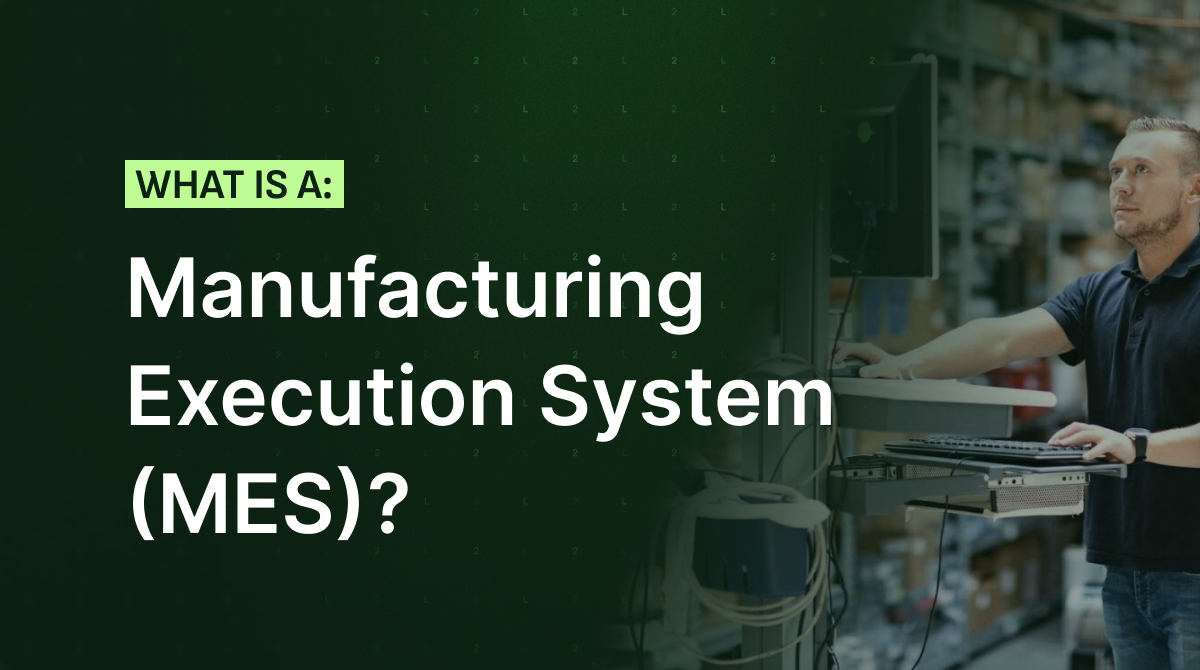
In modern manufacturing, visibility and control are everything. The more connected your production, maintenance, and quality operations are, the faster you can respond to issues, meet demand, and maintain efficiency. For many organizations, that quest for connection leads them to one solution: the Manufacturing Execution System (MES).
But what exactly is an MES, and is it always the right fit?
Below, we’ll explore what an MES does, where it fits in the production landscape, and its benefits and challenges. We’ll also cover how to determine whether a full MES or a lighter, more flexible platform is the smarter path forward.
What Is an MES?
A Manufacturing Execution System is software designed to track and manage the transformation of raw materials into finished goods. It connects the shop floor with higher-level business systems like Enterprise Resource Planning (ERP) to provide a real-time view of production performance.
In practical terms, MES software enables:
- Production scheduling and tracking: Ensuring every product moves efficiently from order to completion
- Quality and compliance management: Maintaining standards and traceability throughout production
- Workforce and resource management: Assigning tasks and optimizing labor and equipment use
- Inventory and materials monitoring: Tracking availability and consumption across operations
Historically, MES platforms emerged in the late 1980s as manufacturers sought digital visibility into shop floor processes. Early systems focused on data collection from machines and operators. Modern MES platforms integrate analytics, traceability, and workflow automation across the entire operation.
However, today’s manufacturing environments look very different from those of decades past.
Production demands are faster. Workforces are leaner. Integration needs are broader. Many traditional MES systems, once considered essential, are now seen as too rigid, complex, or slow to deliver meaningful ROI.
MES in action: A real-world example
Imagine a food processing plant that produces dozens of SKUs daily. The plant manager needs to ensure every batch meets quality standards while minimizing downtime and waste.
A well-implemented MES:
- Tracks the performance of each line in real time
- Flags deviations in quality metrics before they cause costly rework
- Logs production data automatically for traceability and regulatory compliance
- Connects maintenance and production teams through shared alerts when machines slow or fail
The result? Faster response times, consistent output, and confidence that every product leaving the line meets specifications.
But this is only an ideal operating state. In reality, many manufacturers find that traditional MES deployments struggle to reach this level of impact. This is often because they’re too complex and siloed to adapt to their changing needs.
Benefits and challenges of MES
When properly implemented, an MES can deliver tremendous value. But as with any powerful enterprise software, the fit and implementation within an organization is crucial. If
Benefits of an MES
For a manufacturer that implements an MES correctly and who requires the full power of this software, there are a number of distinct operational benefits.
End-to-end visibility: Real-time insight into machine, process, and workforce performance
Traceability and quality control: Automated documentation of every production step—crucial for highly-regulated industries
Data-driven decision-making: Immediate access to performance metrics for faster, more informed actions
Improved coordination: Shared data between departments (production, maintenance, and quality), which reduces friction and miscommunication
Common challenges
There are many instances where an MES isn’t a great fit for an organization, and this misalignment can cause problems in usage and in performance.
- Underutilization: Complex systems often see low adoption on the shop floor, turning into shelfware.
- Integration barriers: Difficulty connecting with ERP, CMMS, or PLC systems can lead to disconnected data.
- Limited agility: Traditional MES systems can be slow to reconfigure for new lines, products, or facilities.
- Poor user experience: Clunky interfaces discourage operator engagement, undermining ROI.
- Delayed insights: Many systems struggle to provide truly real-time data collection and analysis.
Who really needs a full MES?
Not every operation requires the full scope of an MES. In fact, many manufacturers overpay for capabilities they don’t fully use.

To determine whether a full MES is the right fit, ask yourself a few key questions inspired by our MES Fit Scorecard:
- Is automated scheduling and ERP integration mission-critical?
- Can your IT team manage a long, complex rollout?
- Are your main challenges centered on planning systems—or on execution and communication between teams?
- Can you afford to wait 2–3 years to see ROI?
If most of your answers lean toward no, a full MES may not be necessary. Instead, a manufacturing operations platform like L2L can deliver the same visibility and accountability with faster implementation, higher adoption, and lower cost.
A modern alternative to the MES
If your goal is to connect planning and execution without overhauling your entire tech stack, a flexible, modern CMMS offers a logical path forward.
Unlike traditional MES software that demands a “rip and replace” strategy, the best of these platforms enable rolling implementation, allowing manufacturers to connect critical functions incrementally. This approach accelerates time-to-value while reducing operational disruption.
In essence, they deliver the visibility and control of an MES without the complexity or years-long implementation.
Choosing what’s right for your operations
Choosing an MES or deciding on an alternative requires a clear understanding of your organization’s maturity, goals, and available resources. That’s why we’ve created our MES Buyer’s Kit, a comprehensive guide that helps manufacturers:
- Objectively compare MES options.
- Assess their readiness for implementation.
- Identify where a manufacturing operations platform can deliver faster results.
Download The MES Buyer’s Kit to learn how modern manufacturers are simplifying execution, improving visibility, and driving results without the complexity of legacy MES systems.
Revisions
Original version: 13 November 2025
Written by: Chris Rost
Reviewed by: Evelyn DuJack
Please read our editorial process for more information
Related Posts
Subscribe to Our Blog
We won't spam you, we promise. Only informative stuff about manufacturing, that's all.



